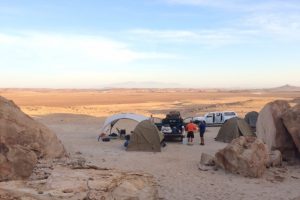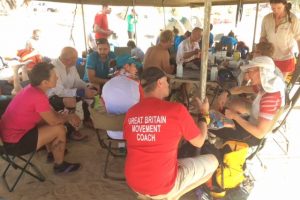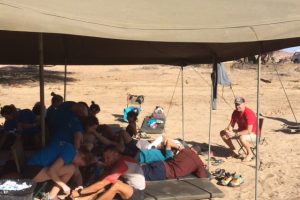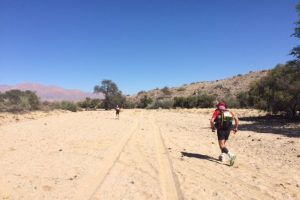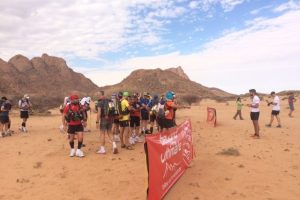As part of my research into movement in extreme environments and gait fatigue, I joined the Desert Ultra race in the Namib desert organised by the Beyond the Ultimate race series.
This event is the sister race to their Ice and Jungle ultra’s on which I have carried out multiple movement research projects, so I knew I was set for a exciting and fascinating week.
The aim of my research was to better understand the ground reaction force on sand in comparison to the traditional surfaces on which we train and race on, to look at it’s effects on vertical oscillation and, in turn, stride length. Carrying a pack of up to 12kgs and temperatures of up to 40 degrees would also be a contributing factor (for tips of light packs speak to Archie Jungle!)
This information is little understood but fundamental to efficient movement for endurance athletes competing in the desert environment.
To gather data for the research I used Vimove and Garmin technology alongside 360 degree video analysis.
The technology enabled me to record:
* ground reaction force (measured in newtons)
* speed of the leg during the stride (measured in G forces)
* cadence
* vertical oscillation
* ground contact time
* stride length
* heart rate
* video Analysis
* perceived rate of exertion
The data gathered was of great interest as the desert surfaces were multi faceted and gave great variety on individual stages.
During the project I also worked with the competitors on their efficiency of movement. What I was able to learn from them and the
results from the research will be invaluable in my movement workshops for competitors taking on events in extreme environments. It will enable me to provide vital information that will effect their training and racing preparation.

